News

Man Dies After Domestic Dispute in Valaichchenai; Woman Taken Into Custody
A 46-year-old man was killed during a domestic dispute reported from the Vahaneri area within the Valaichchenai police division on Monday morning, according to police.
Authorities said the incident occurred at the victim’s residence, where he sustained fatal injuries during an argument. Valaichchenai Police launched an investigation after receiving a complaint regarding the incident.
Preliminary inquiries indicate that the dispute arose between the man and his wife. During the confrontation, the man had allegedly attempted to attack his wife with a sharp object, after which she responded in self-defence, police said. The altercation resulted in the man’s death at the scene.
The deceased, a resident of Vahaneri, was pronounced dead upon examination. His body has been placed at the Valaichchenai Hospital mortuary for a post-mortem examination.
A 42-year-old woman has been arrested in connection with the case, and further investigations are being carried out by the Valaichchenai Police.
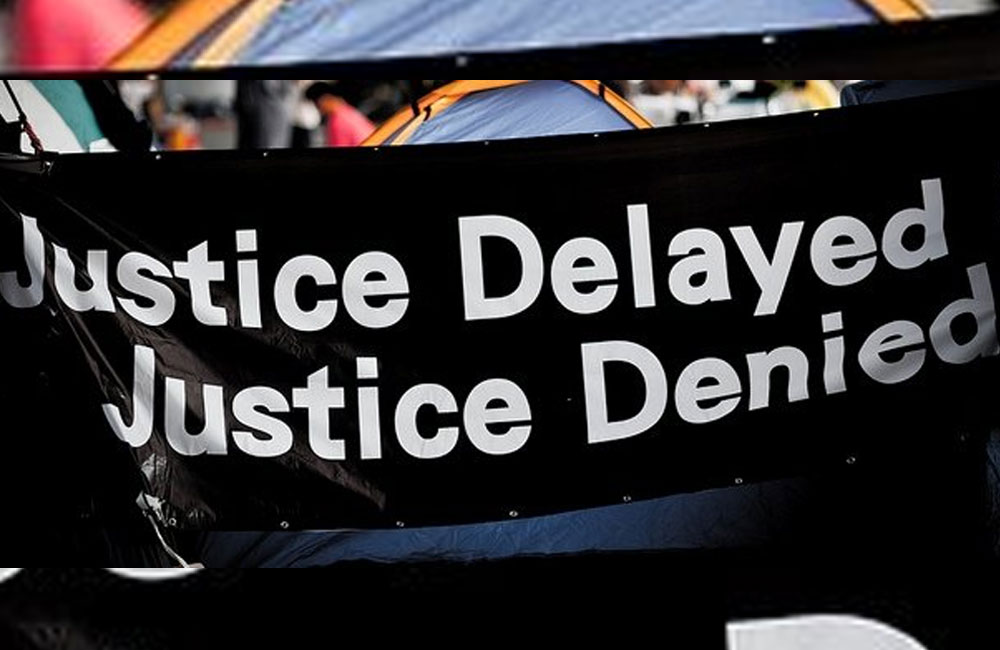
Justice delayed is justice denied
Chairman of the United National Party (UNP) Wajira Abeywardena has said that Sri Lanka’s conviction rate remains as low as two percent, as reported in the media. While Sri Lanka records only a two-percent conviction rate, Japan’s stands as high as 98 percent, according to him.
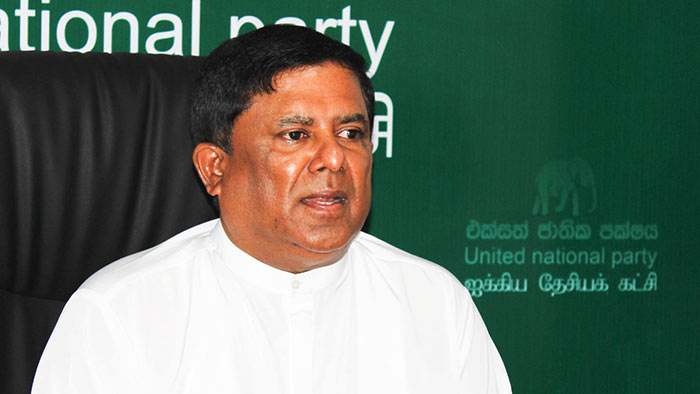
This stark contrast exposes a troubling reality. Most individuals arrested in Sri Lanka are eventually acquitted of the charges brought against them. After prolonged detention—often raising serious human-rights concerns—they ultimately walk free without a conviction.
In our country, investigative officers simply implement laws that were formulated elsewhere. Parliament is the law making body. Law makers make laws. After World War II, new international institutions were created, but we must now ask whether these institutions remain appropriate in today’s context. Human rights conditions differ according to the economic strength of each country. It is a sad reality. These institutions should take such disparities into account, he said as reported in our online edition.
He added: “Our Constitution specifies that it is permissible to keep a person under arrest or detained until investigations are completed. If someone is held for periods ranging from three months to 25 years before the judiciary delivers a final ruling, it is still not considered a rights violation in that sense. It is time to address this. I hope every institution concerned will pay due attention.”
Even before the UNP Chairman highlighted the issue at an event to mark International Human Rights Day, the alarmingly low conviction rate had sparked sporadic debate in political circles. Creating a safe and orderly society requires the elimination of crime, the upholding of the rule of law, and the effective enforcement of legislation. While Sri Lanka has the necessary laws, enforcement remains the greater challenge in certain instances. Procedural delays, weak evidence, and victim withdrawal are widely recognised as major contributors to the poor conviction record.
An acquittal does not necessarily mean the accused is innocent. In many instances, charges cannot be proved beyond reasonable doubt. In other cases, prolonged or flawed investigations undermine the prosecution. Investigative lapses—sometimes stretching over years—have become a systemic problem.
For any society to move forward, justice must be accessible, efficient, and fair. The maxim “justice delayed is justice denied,” popularised by William Ewart Gladstone in 1868 remains relevant today. Beyond improving judicial infrastructure, the government must strengthen its investigative arms, particularly the police, to ensure that the law applies equally to all.
Most cases based on police investigations collapse in court due to weak evidence collection, procedural errors, and poor prosecution practices. Crime control and improving conviction rates are core responsibilities of the police. Enhancing officers’ investigative skills and mandating higher professional qualifications should therefore be priorities.
In today’s technology-driven world, scientific evidence is crucial for successful prosecutions. Forensic laboratories and other specialised units must be upgraded and adequately resourced. Medical experts, proper collection of physical evidence, and accurate analysis all play vital roles in securing convictions. Effective coordination among all these actors is equally important. Without it, insufficient evidence, incomplete documentation and flawed reporting become common reasons for cases to be dismissed and offenders to go unpunished.
Sri Lanka’s criminal justice system must be strengthened by improving the processes involved in investigating, prosecuting, and trying offenders. Only then can public trust be restored, the rule of law upheld, and justice delivered without delay.
Strengthening the criminal justice system must also go hand in hand with broader institutional reforms. One of the main challenges is the severe backlog of cases that clogs the courts. Thousands of files remain pending for years, sometimes decades, resulting in witnesses forgetting crucial details, victims losing interest, and accused persons exploiting loopholes to evade accountability.
Another important area is the independence and capacity of the Attorney General’s Department. Workload on prosecutors should be eased.
At the investigative level, strengthening internal oversight within the police is essential. Allegations of coerced confessions, custodial violence, political interference, and mishandled evidence should not mar the reputation of the police.
Witness protection remains another critical weakness. Many cases collapse because victims and witnesses fear retaliation, particularly in cases involving powerful individuals, drug networks, or organised criminal groups. Sri Lanka does have a Witness Protection Authority, but its operations should be improved. A fully functional witness protection system—with relocation provisions, anonymity options, and psychological support—would encourage more individuals to testify without fear.
(Source - Dailymirror)

Sri Lanka Cricket Pioneer D. S. de Silva Passes Away at 83
D. S. de Silva, a former Sri Lanka leg-spinner who played a key role in the nation’s first steps into Test cricket and later headed Sri Lanka Cricket, has passed away at the age of 83. Family sources confirmed that he died in London after a short illness.
De Silva was part of Sri Lanka’s historic maiden Test match in 1982 and quickly emerged as one of the most influential figures of that formative period. He went on to captain the national side in two Test matches, earning widespread respect for his leadership and experience during the early years of Test cricket.
He holds several significant distinctions in Sri Lanka’s cricketing history, including being the country’s first One Day International cap recipient and the second player to receive a Test cap. As a leg-spinner, de Silva etched his name into the record books during the 1982 tour of Pakistan by becoming the first Sri Lankan bowler to claim a five-wicket haul in a Test innings. The following year, during the tour of New Zealand, he also became the oldest cricketer to captain Sri Lanka in Test cricket.
After stepping away from international play, de Silva continued to contribute extensively to the sport. He served in various roles such as coach, team manager and national selector, before being appointed Chairman of Sri Lanka Cricket from 2009 to 2011.
Highly regarded for his dedication to the game over several decades, D. S. de Silva is remembered as one of Sri Lanka’s finest leg-spinners and a key architect of the country’s early cricketing legacy.
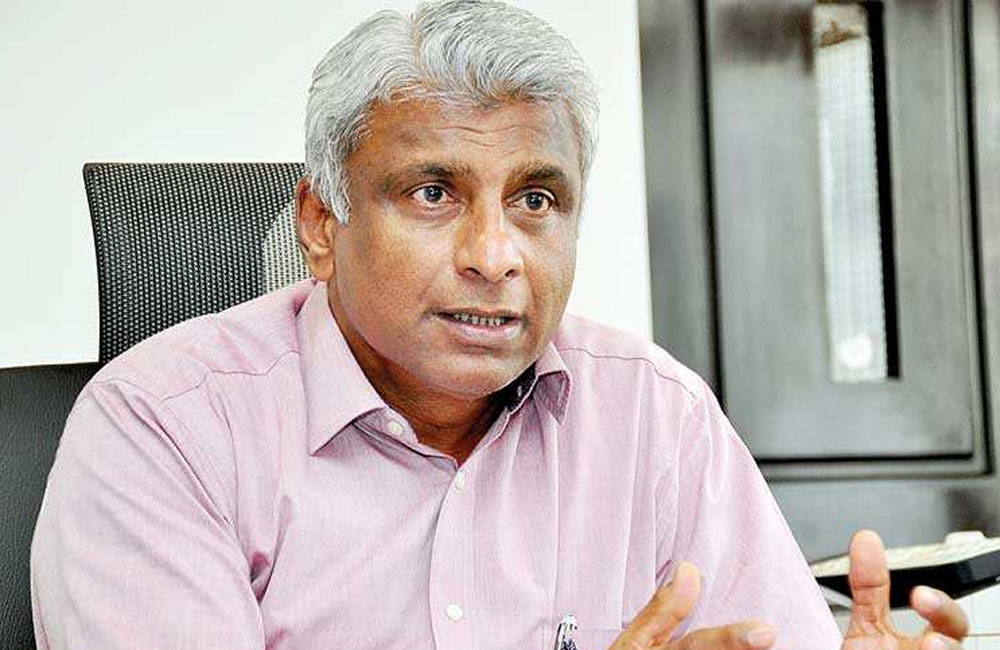
Former Petroleum Corporation Chairman Arrested on Corruption Charges
Former Ceylon Petroleum Corporation (CPC) Chairman Dammika Ranatunga has been arrested by the Bribery Commission over allegations of financial misconduct. He is accused of causing a loss of nearly Rs. 800 million to the state-owned oil company and is due to be produced before court today.
The Commission to Investigate Allegations of Bribery or Corruption (CIABOC) has arrested former Chairman of the Ceylon Petroleum Corporation, Dammika Ranatunga, in connection with alleged financial irregularities during his tenure.According to investigators, Ranatunga is accused of cancelling three long-term fuel procurement tenders planned for the 2017–2018 period and instead approving spot purchases at significantly higher prices. Authorities allege that this decision resulted in a financial loss of approximately Rs. 800 million to the CPC.
He is expected to be presented before the Colombo Chief Magistrate’s Court later today for further legal proceedings.

Inginimitiya Reservoir to Release Water This Morning, Public Urged to Stay Alert
The Irrigation Department says arrangements have been made to open the spill gates of the Inginimitiya Reservoir at around 7.30 a.m. today (16), allowing a discharge of approximately 1,000 cubic feet of water per second.
Following the decision, the Director of Irrigation has instructed people living in low-lying and downstream areas surrounding the reservoir to remain vigilant and exercise extra caution, as water levels in nearby waterways are expected to rise.
Authorities have urged the public to stay informed and follow safety guidance to avoid potential risks during the release.
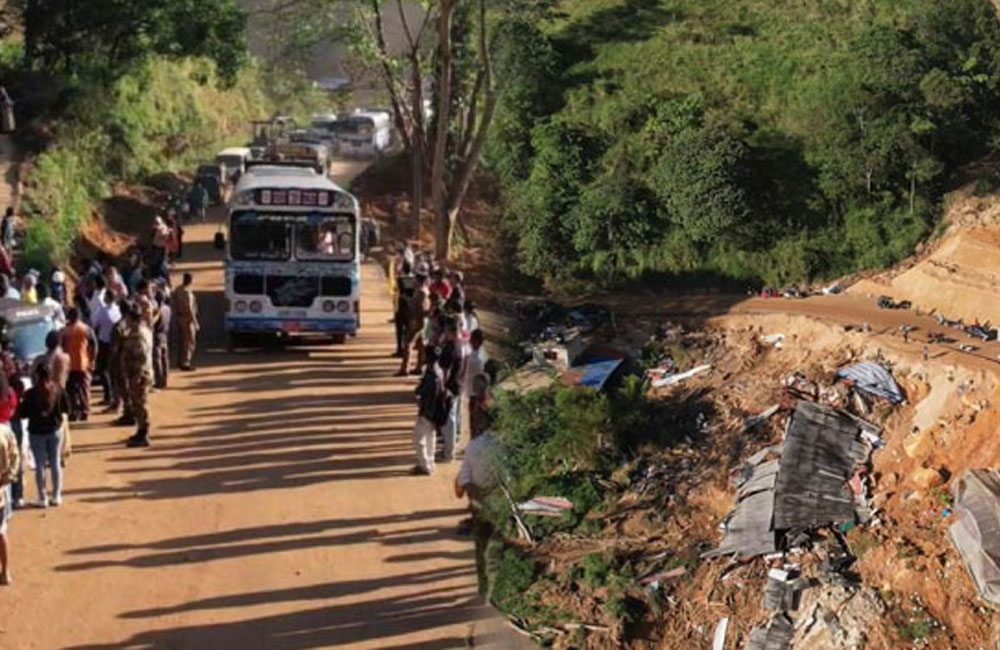
Nawalapitiya-Kandy Road Reopens After 18 Days Following Cyclone Damage
The Nawalapitiya-Kandy main road has reopened to traffic today after an 18-day closure due to damage from Cyclone Ditwah. Authorities warn motorists to drive carefully as some construction work continues and heavy vehicle restrictions remain in place.
The Nawalapitiya-Kandy main road, which was disrupted by landslides during Cyclone Ditwah, has resumed vehicular traffic today (15) after being closed for 18 days. Emergency repairs involved clearing displaced earth and reconstructing sections of the road to ensure safe travel, though the risk of further landslides above the roadway persists.
The Road Development Authority (RDA) has advised drivers to exercise caution while traveling on the route until all restoration work is fully completed. Restrictions on heavy vehicles remain in effect.
The repair project was executed with collaboration from the RDA, the 6th Corps of Engineers Regiment, Nawalapitiya and Ethgala Police Stations, the Pasbage Korale Pradeshiya Sabha, and other local authorities.
Following the reopening, MP Thushari Jayasinghe stated that most roads in the Pasbage Korale area have now been restored. She also mentioned that the Ulapane-Kandy road, still under repair, is expected to reopen within approximately one week.

No Third-Term Tests for Grades 6–10 in 2025, Education Ministry Confirms
The Ministry of Education, Higher Education, and Vocational Education has reiterated that third-term examinations must not be conducted for students in Grades 6 to 10 during the 2025 academic year.In a circular issued to education officials and school principals, the Ministry stressed that earlier instructions regarding the suspension of these examinations remain in force. Authorities were advised that the directive should be followed without deviation and fully implemented across all schools.
The Ministry further underscored the responsibility of school administrators to ensure compliance with the policy, warning that no exceptions will be permitted.

Post-disaster economic recovery in the balance
Cyclone Ditwah effectively tested Sri Lanka’s governing capacity in an age of climate risk – a test the State appears to have miserably failed. What unfolded in late November was not simply the fury of nature overwhelming human systems, but also the exposure of institutional paralysis, delayed decision-making, and a troubling attempt to displace responsibility after the fact.
In the days following the disaster, the Government found itself facing mounting criticism. The initial reflex was predictable: deflect blame. Attention was directed at the Department of Meteorology, which was accused of failing to issue timely warnings. Yet this narrative has now been decisively undermined.
The Sri Lanka Association of Meteorologists went on record last week stating that from 23 November onwards, warnings relating to Cyclone Ditwah had been issued no fewer than 25 times to ‘authorised institutions.’ These warnings were not vague advisories; they were structured alerts based on evolving data. The problem, as the association made clear, was not the absence of information but the absence of action. That distinction matters, because when warnings exist and remain unheeded, what follows is no longer an ‘act of God’ but a failure of governance.

Nowhere was this failure more evident than in the functioning – or dysfunction – of the Disaster Management Centre (DMC). At the time the cyclone reached its most destructive intensity on 27 and 28 November, the institution tasked with coordinating national disaster response was effectively dormant and leaderless. A director general was appointed only on 29 November, after the damage had largely been done.
The DMC operates directly under the Executive authority of the President. In that context, attempts to shift culpability onto technical agencies such as the Meteorology Department appear less like genuine accountability and more like political damage control. When early warnings are issued, the chain of responsibility does not end at forecasting; it begins there.
Disaster management is not about predicting rain, it is about translating information into evacuations, reservoir management, land-use restrictions, emergency mobilisations, and timely communication with local authorities. On each of these counts, the State faltered. It is becoming clear that the consequences of this failure extend far beyond the immediate human suffering and strike at the heart of Sri Lanka’s fragile economic recovery.
Just last week, Moody’s issued a stark warning that Cyclone Ditwah could stall Sri Lanka’s post-default fiscal recovery. The rating agency cited extensive infrastructure damage and, crucially, the country’s weak capacity to manage climate-related risks. For a country still navigating the long shadow of sovereign default, perceptions of institutional resilience matter almost as much as macroeconomic numbers.

Sri Lanka entered the final quarter of this year with ambitious but necessary targets. Foreign reserves were expected to reach $ 7.2 billion by year-end and economic growth needed to approach 6% to maintain momentum under the IMF-supported stabilisation programme. Even before the disaster, these targets were proving difficult. After Ditwah, they appear increasingly unrealistic.
By the end of November, gross official foreign reserves had fallen to $ 6.03 billion, declining by $ 183 million in a single month. The current account, which had remained in surplus for much of the year, has now slipped into deficit territory. Tourist arrivals continued to grow in November, suggesting that the reserve decline cannot be explained away by the cyclone alone. The deeper issue is structural fragility.
Yet, beyond balance sheets and credit assessments lies the human reality of Ditwah – one that resists abstraction. “The plantations are unsafe. There will not be any work for several months. We will have to snap out of plantation lives and work somewhere else,” a tea plucker told a reporter of a foreign news agency, from a Government shelter. He had fled with his wife, also a tea plucker, and their two children after landslides made their estate uninhabitable. The fate of this family can no longer be considered an isolated story; it is a window into a broader economic shock that official statements have yet to fully acknowledge.
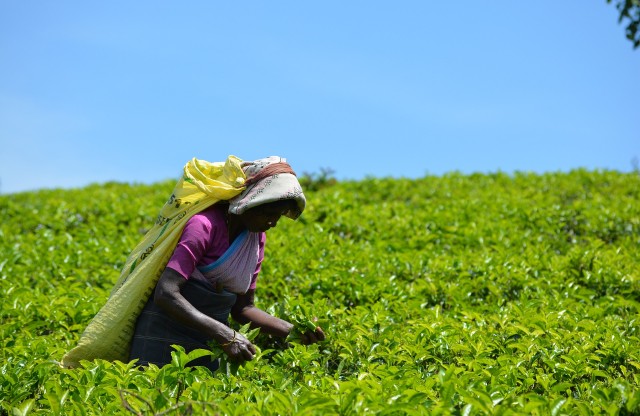
Tea is not merely a symbol of Sri Lanka’s colonial past or a feature of its brand identity, it is one of the country’s biggest sources of export revenue. When plantations are rendered unsafe and labour displaced for months, the impact is not confined to estate communities. It ripples through export earnings, rural consumption, employment, and foreign exchange inflows. Recovery in this sector cannot be improvised for it requires coordinated rehabilitation, slope stabilisation, infrastructure repair, and social protection for displaced workers.
The same applies to another quietly critical sector now reeling from the floods: export-oriented shrimp and prawn farming. Almost all such farms have reportedly been severely affected, raising further concerns about export revenue losses. In an economy where every dollar matters, these shocks accumulate dangerously fast.
Faced with devastation, the Government has announced relief packages and compensation promises running into billions of rupees. Compassion is necessary, but compassion without method can be fiscally reckless. Disturbingly, many of these commitments have been made in the absence of verified damage assessments. The responsible approach would have been to provide immediate emergency assistance, conduct systematic data collection, calculate costs transparently, and seek parliamentary approval based on clearly articulated criteria. Instead, the country risks substituting urgency with improvisation.
This matters because relief spending does not occur in a vacuum. Increased transfers raise demand without increasing supply, fuelling inflation or import growth or both. In Sri Lanka’s case, where reconstruction materials have few domestic substitutes, the pressure will fall disproportionately on the external sector, further straining foreign reserves.
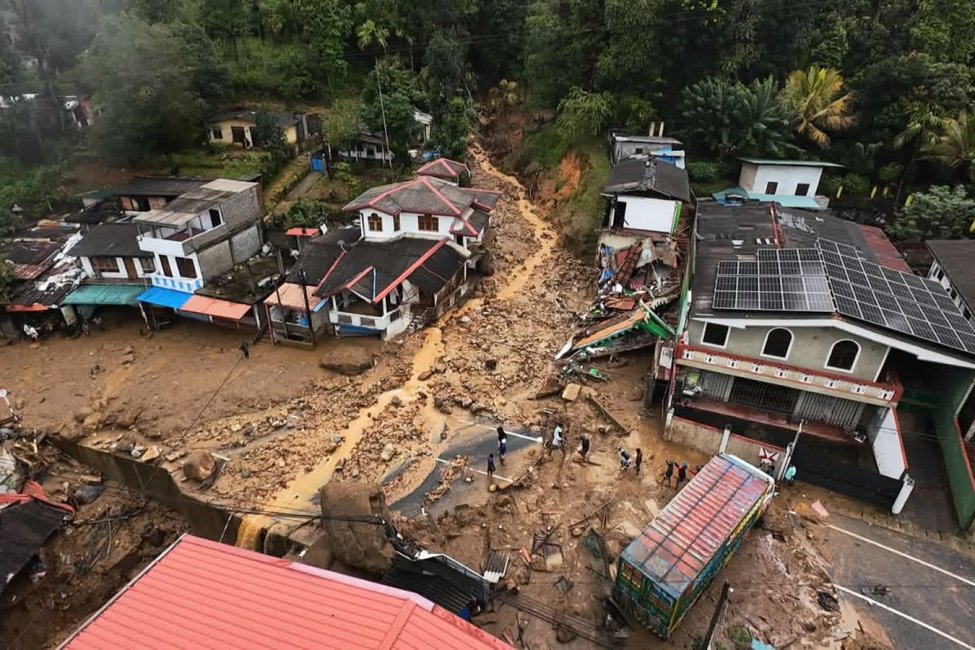
The Government has already introduced two supplementary budgets, significantly increasing expenditure this year and next. While politically understandable, these decisions will complicate relations with the IMF, potentially forcing a reopening of completed reviews and delaying the next tranche. The Central Bank Governor’s earlier confidence that Sri Lanka would end the year with record post-crisis reserves now looks misplaced.
The governance failures surrounding Ditwah are also moving towards a legal reckoning. Several Opposition parties are reportedly preparing to file Fundamental Rights petitions in the Supreme Court, alleging criminal negligence in the failure to mitigate disaster impacts that claimed hundreds of lives. What is notable is not only the scale of the legal mobilisation, with around 1,500 lawyers across the nine provinces reportedly having volunteered, but the framing of the case: whether the State violated its duty of care to citizens in the face of known risks.
To its credit, the Opposition has, so far, chosen restraint over opportunism, calling for unity and relief rather than immediate political attack. But unity in crisis must not mutate into immunity from accountability. A democracy that cannot ask hard questions after tragedy will repeat its mistakes.
Even so, Cyclone Ditwah confronts Sri Lanka with the uncomfortable truth that climate disasters will not be episodic anomalies. They will be recurring stress tests. Each one will interrogate the same questions: early warning systems, institutional readiness, land-use planning, reservoir management, fiscal buffers, and social protection.
What failed in November was not technology but governance. Warnings existed. Risks were known. Institutions were in place – on paper. What was missing was timely leadership, coordinated action, and the humility to accept responsibility rather than redirect blame. As Moody’s warning underscores, international markets are watching. But more importantly, so are citizens whose lives, livelihoods, and futures depend on whether lessons have been learnt.
Cyclone Ditwah should mark a turning point – not in speeches, but in systems. Not in slogans, but in structures. Early warnings must trigger automatic, empowered responses. Disaster management must be professionalised, insulated from politics, and led by those with authority and expertise. Climate risk cannot be treated as an occasional emergency; it is now a permanent condition of governance.
Sri Lanka stands at a dangerous crossroads. It is trying to rebuild an economy shattered by default while facing a future of more frequent and intense climate shocks. The kicker: the margin for error has vanished.
(Source - themorning.lk)
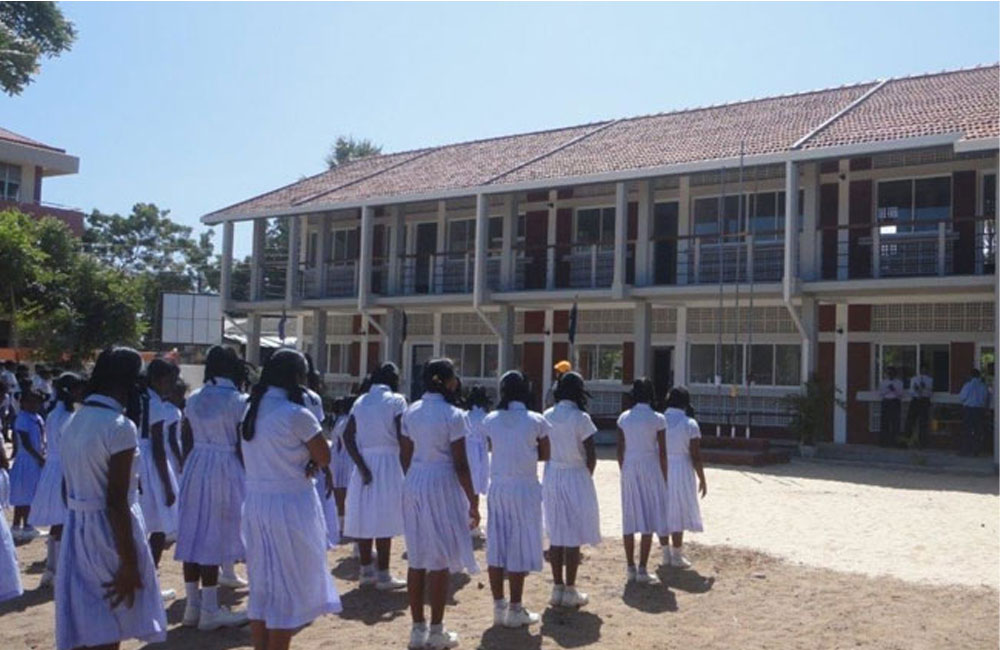
Second Phase of Third School Term Begins Today, Some Provinces Remain Closed
The second phase of the third school term for 2025 officially begins today (16) for all government and government-approved private schools, as well as Pirivenas, the Ministry of Education announced.The reopening had originally been scheduled for December 8 but was postponed due to adverse conditions triggered by Cyclone Ditwah. Under the revised academic calendar, the second phase of the third term will run until December 22, after which schools will close for the Christmas holidays from December 23 to December 28.
Classes for the third and final phase of the third term will resume on December 29 and continue until December 31, marking the conclusion of academic activities for the term.
School holidays will then be observed from January 10 to January 20 to accommodate examinations for remaining subjects of the 2025 G.C.E. Advanced Level examination. The second phase of the first school term in 2026 is scheduled from January 21 to February 13, followed by holidays from February 14 to March 2 for the G.C.E. Ordinary Level examination.
However, the Ministry of Education confirmed that 640 schools in three provinces will not reopen today. Secretary to the Ministry, Nalaka Kaluwewa, stated that schools in the Uva, Central, and North Western provinces will remain closed due to prevailing conditions.
Meanwhile, transport authorities have introduced special measures to support students in disaster-affected regions. The Sri Lanka Transport Board (SLTB) said it will continue to provide free transport services for schoolchildren in impacted areas for the remainder of the year. SLTB Chairman Sanjeewa Nandana Kanakaratne noted that additional bus services have been deployed to meet student travel needs.
The Railway Department has also arranged several extra train services to assist schoolchildren during the coming days. These services will operate along the Main Line, Coastal Line, Puttalam Line, and Kelani Valley Line. Additionally, students will be allowed to travel throughout December using their November school season tickets, the Department said.
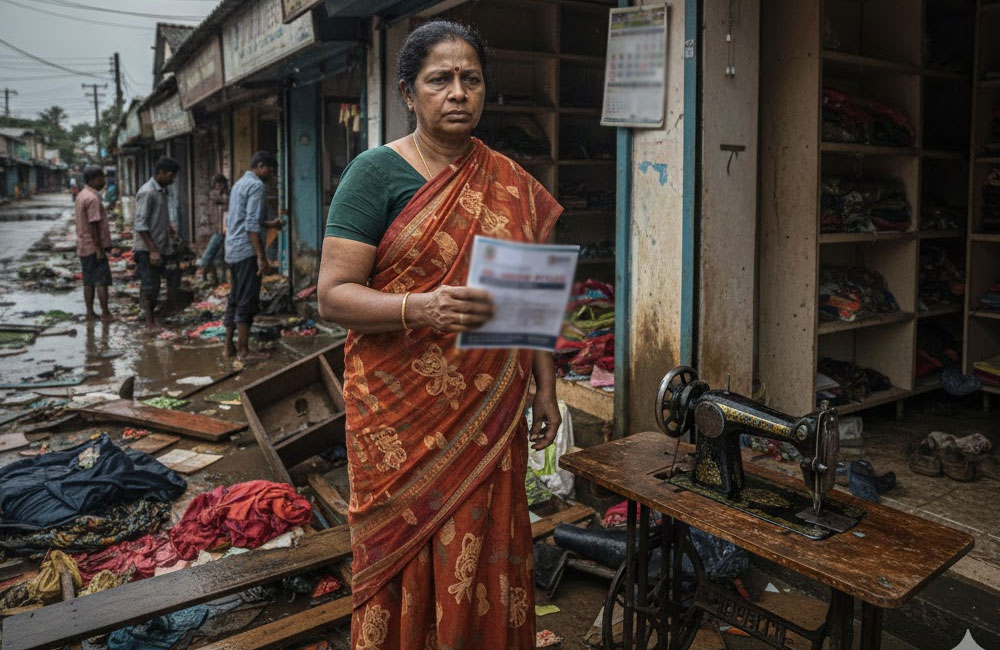
Loans after the Floods: Relief or another Debt Trap
The Government’s announcement of the RE-MSME PLUS loan scheme, aimed at reviving enterprises affected by Cyclone Diwah, has reopened a long-simmering debate over how Sri Lanka responds to economic devastation caused by natural disasters.
While authorities describe the scheme as a lifeline for thousands of struggling businesses, many entrepreneurs and analysts question whether another credit-based solution delayed until 2026 can realistically rescue micro, small and medium enterprises (MSMEs) that are already on the brink of collapse.
Cyclone Diwah and the ensuing floods affected at least 13,698 businesses, according to complaints lodged with a support centre set up by the Ministry of Industries. More than 10,000 of these were micro and small enterprises, including family-run shops, small manufacturers, repair workshops, food processors, and informal service providers.
For many, floodwaters destroyed equipment, stocks, and raw materials within hours, while prolonged power cuts and damaged transport links brought operations to a standstill. Several medium-scale industries reported losses running into millions of rupees due to damaged machinery and disrupted supply chains.
In this context, the RE-MSME PLUS scheme offers three-year loans at a concessional 3 percent interest rate, with a six-month grace period. Micro enterprises will be eligible for loans of up to Rs. 250,000, while small and medium firms can access up to Rs. 1 million.
The Government also plans to consolidate multiple existing schemes such as SMILE Phase III, E-FRIEND II, eco-friendly financing lines, and the earlier RE-MSME loan scheme into a single framework to improve coordination and oversight.
However, critics argue that the core problem is not the number of loan schemes, but the absence of timely and non-debt relief. During previous floods, landslides, and even the height of the economic crisis,
MSME owners repeatedly complained that concessional loans arrived months after the disaster, by which time many businesses had already shut down. Application procedures were often complex, collateral requirements excluded informal operators, and approved loan amounts fell short of actual recovery needs.
For micro enterprises earning daily income, taking on new debt however cheap can be risky. Many are still servicing loans taken during the economic crisis, when interest rates were far higher and demand sharply contracted. Adding fresh borrowing without grants, insurance payouts, or debt moratoriums may simply deepen financial stress rather than restore productive capacity.
Economists also warn that postponing implementation until 2026 weakens the scheme’s impact. Disaster recovery, they argue, requires rapid liquidity, asset replacement, and working capital within weeks not years. Without immediate intervention, affected areas risk permanent loss of businesses, jobs, and local supply networks.
Cyclone Diwah has therefore become a test case for whether Sri Lanka will move beyond a loan-centric disaster response. Unless RE-MSME PLUS is complemented by fast-track grants, simplified access, and a long-term MSME disaster insurance mechanism, many fear the scheme could become yet another well-intentioned policy that arrives too late for those it is meant to save.

Widespread Showers and Strong Winds Forecast Across Sri Lanka Today
Fairly heavy rainfall is expected in several parts of the country today as an easterly wave continues to influence weather conditions across Sri Lanka, according to the Department of Meteorology.
Showers are forecast to occur at times in the Northern, North-Central, Eastern, Uva, and Central provinces over the next few days. In particular, rainfall exceeding 50 millimetres is likely at certain locations in the Northern and Eastern provinces as well as in the Polonnaruwa district.In other areas of the island, showers or thundershowers may develop at several places after 1.00 p.m., the Meteorology Department said.
Meanwhile, fairly strong winds ranging between 30 and 40 kilometres per hour are expected intermittently over the eastern slopes of the central hills, the Northern, North-Central, and North-Western provinces, and in the Trincomalee, Hambantota, and Monaragala districts.
Misty conditions are also likely during the early morning hours in parts of the Sabaragamuwa and Central provinces, along with the Galle and Matara districts.
The general public has been urged to take necessary precautions to reduce potential damage from localized strong winds and lightning associated with thundershowers.

Cyclone’s True Price Tag Exposes Sri Lanka’s Fiscal Fragility
As emergency relief winds down, the economic reckoning from the recent cyclone is only beginning. While floodwaters have receded, the financial burden left behind threatens to test Sri Lanka’s already strained public finances, exposing a widening gap between disaster damage and the state’s capacity to compensate victims.
Opposition estimates place the total economic loss at nearly USD 6 billion, encompassing destroyed infrastructure, lost livelihoods, agricultural devastation, and business disruptions. However, officials concede that while physical damage has been documented, the full social and economic cost remains unquantified.
The Secretary to the Ministry of Finance, Dr. Harshana Suriyapperuma, says that the Treasury has so far disbursed more than Rs. 13 billion to provide relief to the people affected by the disaster situation.
According to figures cited by a senior Treasury official, the compensation framework currently under discussion involves an extensive and costly breakdown. Immediate household relief alone carries a heavy price tag. Providing Rs. 25,000 to clean 67,505 damaged homes would cost nearly Rs. 1.8 billion, while a further Rs. 50,000 per household for essential kitchen items would require an additional Rs. 3.4 billion.
Temporary displacement support adds further pressure. Offering Rs. 25,000 per month for three months as rental assistance would require Rs. 312 million, assuming limited coverage. Any expansion of eligibility would significantly raise this figure.
The agricultural sector represents one of the largest financial exposures. With 510,000 hectares of cultivated land damaged, compensation payments would require approximately Rs. 7 billion. Losses in vegetable farming and livestock are estimated at Rs. 20 billion each, reflecting severe disruptions to rural incomes and national food supply chains.
Perhaps most alarming is the cost of restoring livelihoods. Treasury estimates indicate that compensating families who lost income with Rs. 50,000 each would demand Rs. 44 billion, dwarfing several other relief components combined. Meanwhile, Rs. 200 million is required to revive small and medium-sized enterprises, and Rs. 5 billion would be needed to compensate destroyed business premises.
Education-related recovery has also emerged as a priority, with Rs. 2.5 billion required to replace schoolbooks and learning materials lost in floods.
The total expenditure comes up to Rs 103 billion Tto be spent to pay compensation for damages and lively hood support for cyclone and flood victims.
Against this backdrop, the government has allocated an additional Rs. 550 million for immediate disaster relief, drawn from a Rs. 30 billion disaster management allocation in the national budget. However, these funds cover only a fraction of estimated needs.
While insurance companies have been instructed to fast-track claims and international partners, including the United Nations, have stepped in, the cyclone has laid bare a hard truth: disaster recovery is now as much a fiscal challenge as a humanitarian one.
Page 10 of 638